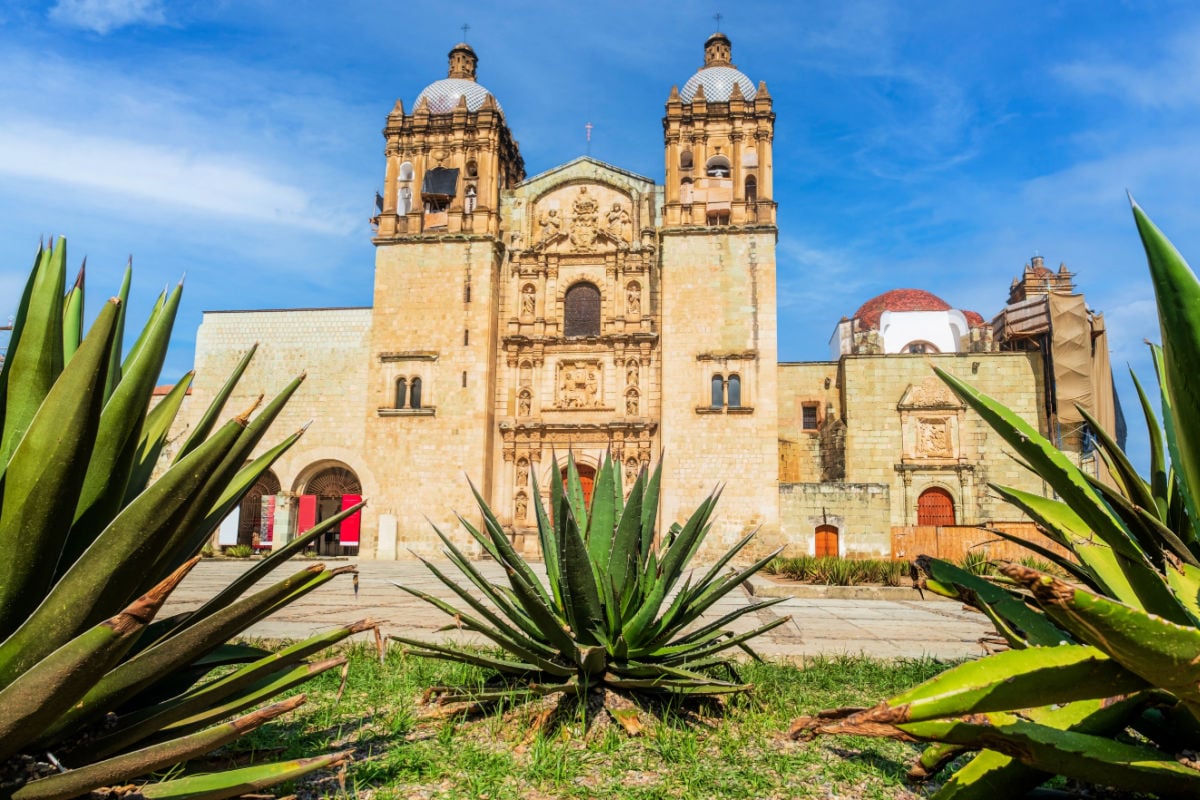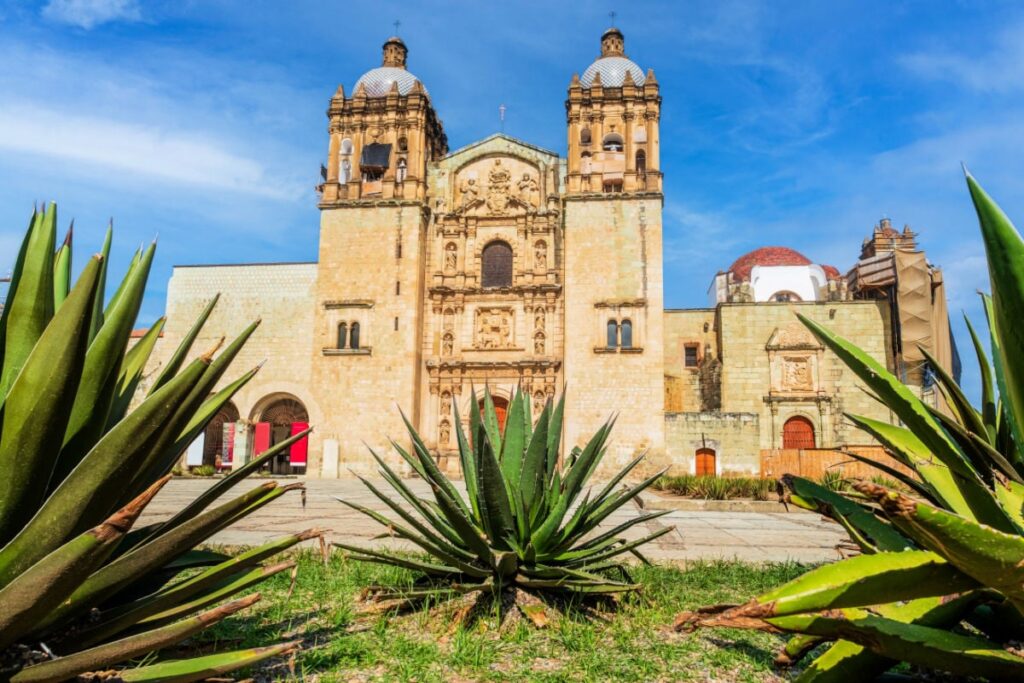No products in the cart.
Travel Guide
This Gorgeous Historic City In Mexico Offers Authentic Culture & Cheaper Prices
Heading to Mexico in the near future but you’re suffering from that deep-seated Cancun fatigue? Listen, we get it: as much as we love all-inclusive resorts and do-nothing vacays ourselves, sometimes we could do with some culture and authenticity.
Not to pass judgement, as here at Travel Off Path we’ve been covering Cancun and all its latest developments for years and we absolutely love it, but… you know… it’s far from being representative of Mexico as a country.
If you’re wondering where to go south of the border to get a taste of the local way of life, without all the fluff and crazy prices, Oaxaca is a short direct flight away:
What Makes Oaxaca Special?

Oaxaca de Juárez, or simply Oaxaca, is one of Mexico’s most historically relevant cities, up there with Mexico City, Guanajuato, Mérida, and the like, and its sheer ancientness and fascinating culture might have something to do with it.
Though it was officially founded in 1529 by the Spanish, the area was originally inhabited by the native Zapotec and Mixtec peoples, who built large pyramids and affluent city-states prior to the arrival of the settlers—but more on that soon enough.
This indigenous heritage has not completely disappeared, but it is rather woven into the fabric of the post-colonial townscape. From Oaxaca’s traditional food, still heavily influenced by pre-Columbian ingredients, to the grandiosity of the churches, it stands at the crossroads between two worlds.
A Colonial Masterpiece Of Mexico


If you’re swapping a Mexican beach escapade for Oaxaca, chances are it’s the intact colonial-era Old Town that has piqued your interest.
A UNESCO World Heritage Site, it is a stone-paved maze dotted with centuries-old townhouses and charming plazas, and dominated by a soaring cathedral, one of the oldest built on the American continent, erected all the way back in 1535.
The Historic Center is where most of the Spanish landmarks are centered: the Catedral Metropolitana itself, towering over a leafy main square (or as the Mexicans call it, zócalo), is a must-see for architecture enthusiasts, but it doesn’t stop there:
Equally impressive, the Templo de Santo Domingo de Guzmán is a Baroque masterpiece, owing to its richly ornamented main portal and gold-clad interior, and let’s not forget the 17th-century Basílica de Nuestra Señora de la Soledad, with its iconic Solomonic columns.
Beautiful Buildings At Every Corner


Oaxaca is a city of many churches and religious shrines, but that is not all that there is to it: one of the oldest colonial buildings in town is the Ex-Convento de San Pablo, dating back to the early 1500s, and a former convent now housing a cultural center.
If you’re keen on learning more about Oaxacan history, check out the well-preserved Casa de Juárez, once the home of Benito Juárez, Mexico’s first Indigenous president, or explore the opulent chambers of Casa de Cortés, the Government Palace.
The murals depicting Oaxaca’s timeline are awe-inspiring, and the palace itself is a classic example of colonial civil architecture that has barely seen the passing of time. In general, museum tickets cost $4–$5.50, or the equivalent in Mexican pesos.
How Cheap Is Oaxaca?


This ties into our next point: Oaxaca is among Mexico’s most budget-friendly destinations.
The main reason for that is the absence of mass tourism: unlike parts of the Riviera Maya and the Mexican Pacific, life here doesn’t revolve around the well-being and comfort of visiting gringos.
Don’t get us wrong, you’ll definitely be treated to that old-school Mexican hospitality when dining out in a family-owned cantina, or browsing the beautiful shops up Calle Macedonio Alcalá, but you won’t be the center of attention like in Tulum.
Local crowds, local prices: expect to pay $5 for a standard meal with a drink if ordering from a fonda, or market stall, and around $7.50–$10 for a menu del día in a non-touristy restaurant.
Traditional servings include tlayuda, Oaxaca’s signature pizza-shaped tortillas with beans and pork lard, tamales filled with mole sauce, and cheese-topped memelas: delicious, fulfilling, and it won’t bleed your wallet dry.
What About Hotels?


Accommodation in downtown Oaxaca is just as inexpensive compared to pricier Mexican vacation spots like the Caribbean: this summer, a superior double room at the Capital O Hotel Patio Pombo, a 3-star listing in the center of the action, will run you up to $37 a night for 2 adults.
There are even cheaper listings, starting from $24 over at Hotel Esperanza, so Oaxaca truly fits every budget, and if you don’t mind splurging a little, given how affordable it can be, the landmark Hotel Azul de Oaxaca, a modern, airy 4-star property, costs $187 to book per adult as a couple.
It is one of the priciest hotels in the city, so now you get the full range.
Overall, travelers spend $22 per day on meals, $11 on public transportation, and an acceptable $36-a-night in hotels when sojourning in Oaxaca, according to Budget Your Trip estimates.
Oaxaca’s Pre-Colonial Gem


Now, back to Oaxaca’s pre-colonial stage—we promised you earlier we would—you can’t leave town without paying a visit to the nearby Monte Albán, a sprawling archaeological zone within easy reach of Oaxaca, and the former capital of the Zapotec civilization.
The Zapotecs ruled this part of Mexico for over 1,000 years before the Spaniards came, and despite not being as famous as the Mayan ruins, Albán also features pyramids, impressive courts, ornate tombs, and multiple stelae with hieroglyphic carvings.
The pyramid itself is a sight to behold, made primarily of stone and adobe, and yet to be spoiled by the kinds of disrespectful crowds you get over in Tulum. By that, we mean less littering and fewer unauthorized climbers.
The site is a short 19-minute drive away from downtown Oaxaca, and there are public buses, as well as taxis and tour operators carrying tourists there at fixed rates.
Getting to Oaxaca itself, you can fly nonstop to Oaxaca International Airport (OAX) from Houston (IAH), Dallas (DFW), and Los Angeles (LAX), with round-trip tickets averaging $300–$350 when booked in advance.
Soon enough, you will even be able to take a direct train from Cancun all the way to Oaxaca.
The Travel Off Path Advantage: Your Travel Toolkit
Subscribe To Our Latest Posts
Enter your email address to subscribe to Travel Off Path’s latest breaking travel news, straight to your inbox.

